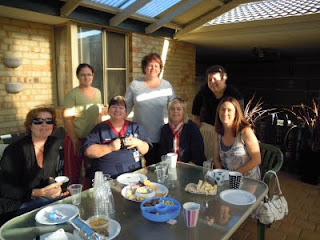
12 months on and I still do not have access or a collaborative agreement:
As a private practice midwife I have not been able to secure a written collaborative agreement or access to hospitals to facilitate the care of my private clients; Unfortunately for the women of WA, there is only one Tertiary hospital and to date this hospital has not supported the role of the 'eligible midwife' or women's choice to be cared for by a private midwife within the tertiary hospital setting. This is totally unacceptable and goes against the governments National Maternity Plan initiative.
There have been many obstacles to try and implement midwifery reform within Australia: To date as far as I am aware there are a handful of collaborative agreements and no credential pathways for access to hospitals for private midwives:
If you remember the National Health Collaborative Determination July 2010 outlines the requirements for private midwives to work within the community; This Determination is clearly not working; for whatever reasons, personal or professional 95% of Obstetricians / GP Obstetricians are not choosing to enter into a formal collaborate agreement with midwives; There has to be a better system in place that does not require midwives to be reliant on Obstetricians who clearly do not want to collaborate -this effectively puts a midwife out of business, and gives women little or no choice. This will not stop women, they will just birth without a midwife.
I have written to over 50 Obstetricians, receiving only 3 responses (negative): the latest response being:
The Determination has to be changed or rescinded to stop the monopoly and control of doctors over midwives, this system is clearly not working;
Just taking a step backwards;
From November 1 2010, women receiving midwifery care could claim a Medicare rebate for services rendered from an eligible midwife:
There have been many obstacles to try and implement midwifery reform within Australia: To date as far as I am aware there are a handful of collaborative agreements and no credential pathways for access to hospitals for private midwives:
If you remember the National Health Collaborative Determination July 2010 outlines the requirements for private midwives to work within the community; This Determination is clearly not working; for whatever reasons, personal or professional 95% of Obstetricians / GP Obstetricians are not choosing to enter into a formal collaborate agreement with midwives; There has to be a better system in place that does not require midwives to be reliant on Obstetricians who clearly do not want to collaborate -this effectively puts a midwife out of business, and gives women little or no choice. This will not stop women, they will just birth without a midwife.
I have written to over 50 Obstetricians, receiving only 3 responses (negative): the latest response being:
"I do not intend to enter into one of these agreements...... Planned birth at home is clearly associated with higher rates of both perinatal morbidity and mortality and I cannot support it".... he went on to wish me well in my venture..... Just how well does he think I am going to do with no hope of getting a collaborative agreement? Maybe that is the plan! This appears to be the general attitude of Obstetricians in WA. The evidence clearly supports homebirth for low risk women, however my request was for continuity of midwifery care not homebirth.
The Determination has to be changed or rescinded to stop the monopoly and control of doctors over midwives, this system is clearly not working;
Just taking a step backwards;
From November 1 2010, women receiving midwifery care could claim a Medicare rebate for services rendered from an eligible midwife:
On 12 November 2010, the National Maternity Services Plan (the Plan) was endorsed by the Australian Health Ministers’ Conference.
The Plan recognises the importance of maternity services within the health system and provides a strategic national framework, as endorsed by state, territory and Commonwealth Governments for the five year period 2010-2015
Within the first 12 months the plan's priority 1 was to:
1.2.1 Australian governments facilitate increased access to midwifery-managed models of care for normal risk women, e.g. midwifery group practice or birthing centres, while maintaining support for choice of, and access to, medically managed
models of care. Australian governments facilitate increased access for public patients to midwifery and medical practitioner continuity of carer programs
1.2.2 Jurisdictions develop consistent approaches to the provision of clinical
privileges within public maternity services, to enable admitting and practice rights for eligible midwives and medical practitioners
NOT ACHIEVED - the first year has passed and we are no closer to achieving these outcomes;It is apparent that women are not being offered true choice within maternity services and Health Services are required to be more flexible. The evidence is clear that midwifery continuity of carer affords better outcomes for women; it reduces intervention and provides for improved parenting. This includes homebirth as an option for uncomplicated pregnancies. Therefore it is imperative, to achieve the strict intention of the National Maternity Services Plan, to protect mothers, babies and achieve best outcomes in maternity care, the Australian Health Ministers need to provide PII insurance for Intrapartum care at home for uncomplicated pregnancies, rescind the current Determination requiring written collaborative arrangements with an obstetrician and compel local Health Districts / Services to provide clinical privileges for eligible midwives, as a matter of urgency.
Ref: picture: http://www.ontheissuesmagazine.com/2010summer/2010summer_Ross.phpA Feminist Vision: No Justice-No Equity by Loretta Ross - My mother always asked the question, "Why would I want to be equal to men, when I've been superior to them all my life?"


























